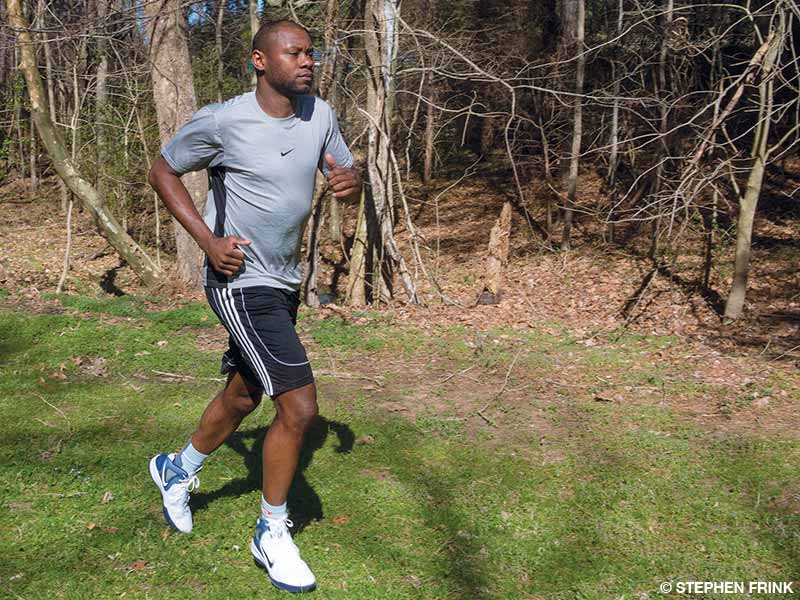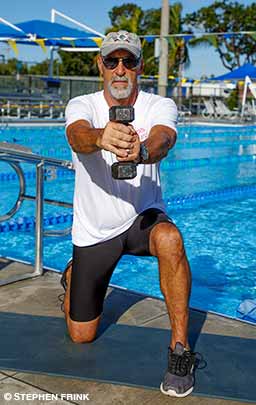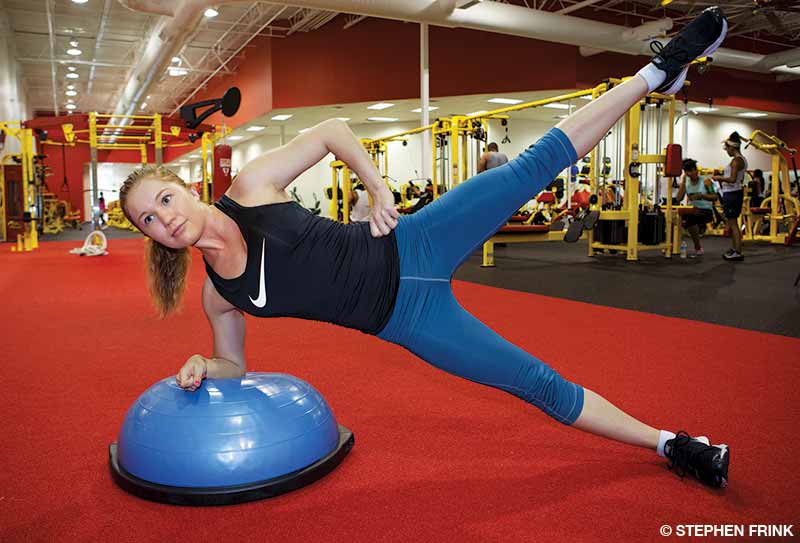Sometimes life gets in the way — family obligations, unforeseen injuries, work responsibilities, social events — or perhaps the world as we know it shuts down for a while. When these things overwhelm us, many people tend to sacrifice exercise first. You may miss a few workouts, and then your exercise routine slowly slips from regular to nonexistent. It happens to most people — even fitness experts and professional athletes — at some time. Although it may feel challenging, it is possible to restart your exercise routine.

Exercise is an essential component of your overall wellness, both physical and mental. A strong, healthy body helps to fend off disease, reduce stress, increase productivity and provide a solid foundation for an enjoyable scuba experience.
Commit to returning to regular physical activity and overcoming the physical and mental challenges in your way. By reading this article, you have taken the first step toward making the conscious decision to increase your physical activity.
Strategies for Success
It is crucial to find your motivation to return to exercise and decide how to prioritize activity even when it is difficult.
Before you get started, complete the physical activity readiness questionnaire (PAR-Q) at bit.ly/acsm-par-q. If you answer “yes” to any questions, talk to your doctor before beginning an exercise program. Otherwise, you can share with your doctor that you have resumed exercising at your next visit. If you experience symptoms such as dizziness, wheezing, lightheadedness, chest pain, palpitations or difficulty breathing, especially when beginning or intensifying your exercise routine, stop and see your physician. These symptoms may be early warnings of life-threatening events that could occur underwater, so don’t disregard them, particularly if you have known risk factors such as diabetes, hypertension, elevated cholesterol, age, smoking or a family history of heart disease.

Next, create a plan that you can realistically integrate into your daily life. Start with short training sessions to not overbook your schedule and to prevent frustration and quitting before you’ve established a routine. You can start with as little as 10 minutes and gradually increase the time. The first five minutes is usually the toughest as your body catches up to fuel your exercise. Once you make it past the five-minute mark, you will usually find that you have the energy to continue. Try to work your way up to 30 minutes per day.
The American College of Sports Medicine (ACSM) recommends that healthy adults ages 18 to 64 participate in moderate aerobic exercise five days per week for a minimum of 30 minutes a day or vigorous exercise for at least 20 minutes three days per week. Aerobic activity can be walking, jogging, swimming, in-line skating or any other activity that you enjoy that elevates your heart rate. Exercises that improve strength (how much you can lift) and endurance (how long you can lift it) should be part of your workout at least twice each week.

While medical clearance to dive does not have a defined optimal fitness level, a fit and healthy individual is better able to dive safely. You will experience the greatest positive safety benefits by moving from a sedentary lifestyle to some physical activity, with smaller gains as you move up the fitness continuum. From a cardiovascular perspective, a higher fitness level means you will be working at a smaller percentage of your maximum capability, allowing you to devote more attention and focus to dive tasks. This is particularly beneficial in challenging dive conditions.
The ACSM total-body strength training recommendations include eight to 10 exercises that together target the major muscle groups, starting with one set of each on two to three nonconsecutive days each week. These movements should be with a full range of motion and pain-free. The chart shows an example full-body routine of standard exercises that offers a good, balanced starting point. This routine adds two arm exercises that you can include or remove as necessary, but a lower level of arm strength can limit the chest and back exercises.
Full-Body Routine
Begin with a lighter routine than you think you are ready for, and gradually increase the intensity and duration of training. Your body starts to decondition in as little as a week, so you should not pick up your exercise routine where you left off before the break. Starting easy and gradually progressing will allow your body and mind to adapt to your new exercise routine and help you avoid potential injury.

The human body responds quickly to exercise. Even walking has significant positive effects on your health, and adding exercise to your routine can lower stress. If getting to a gym is too challenging, go for a brisk walk or a light jog to get moving. Feeling good from minor activity can help you want to continue your return to healthy habits.
There is no perfect time for a workout, and you have to balance all your daily requirements, but people who plan for and prioritize exercise are more successful in the long run. Plan for your workout time, location and attire the night before. If you exercise after work, have your gym bag ready next to your desk as a reminder of your commitment.

Exercise can be more enjoyable with a buddy. People who incorporate socialization with training are often more successful at sustaining their routine. Find a friend to train with or hold you accountable. A group challenge or event can also help to kick-start your training program. Provide variety by mixing up your workouts. Dive Fitness articles in past issues of Alert Diver have specific exercises that you can incorporate. Changing your routine will reduce the likelihood of boredom and train a wider range of muscles.
Choosing to put your time into daily activities creates habits. The more consistent you are with your exercise routine, the easier it is to form healthy habits.
Implementing a regular physical fitness routine will improve your mental and physical wellness. The body enjoys positive stress and will release endorphins, burn calories, improve physical fitness and reduce the risk of major diseases. Your daily fitness habit will also become an essential part of being prepared for your next dive.
NOTE: To avoid an increased risk of decompression sickness, DAN® recommends that divers avoid strenuous exercise for 24 hours after making a dive. During your annual physical exam or following any changes in your health status, consult your physician to ensure you have medical clearance to dive.
© Alert Diver — Q2 2021